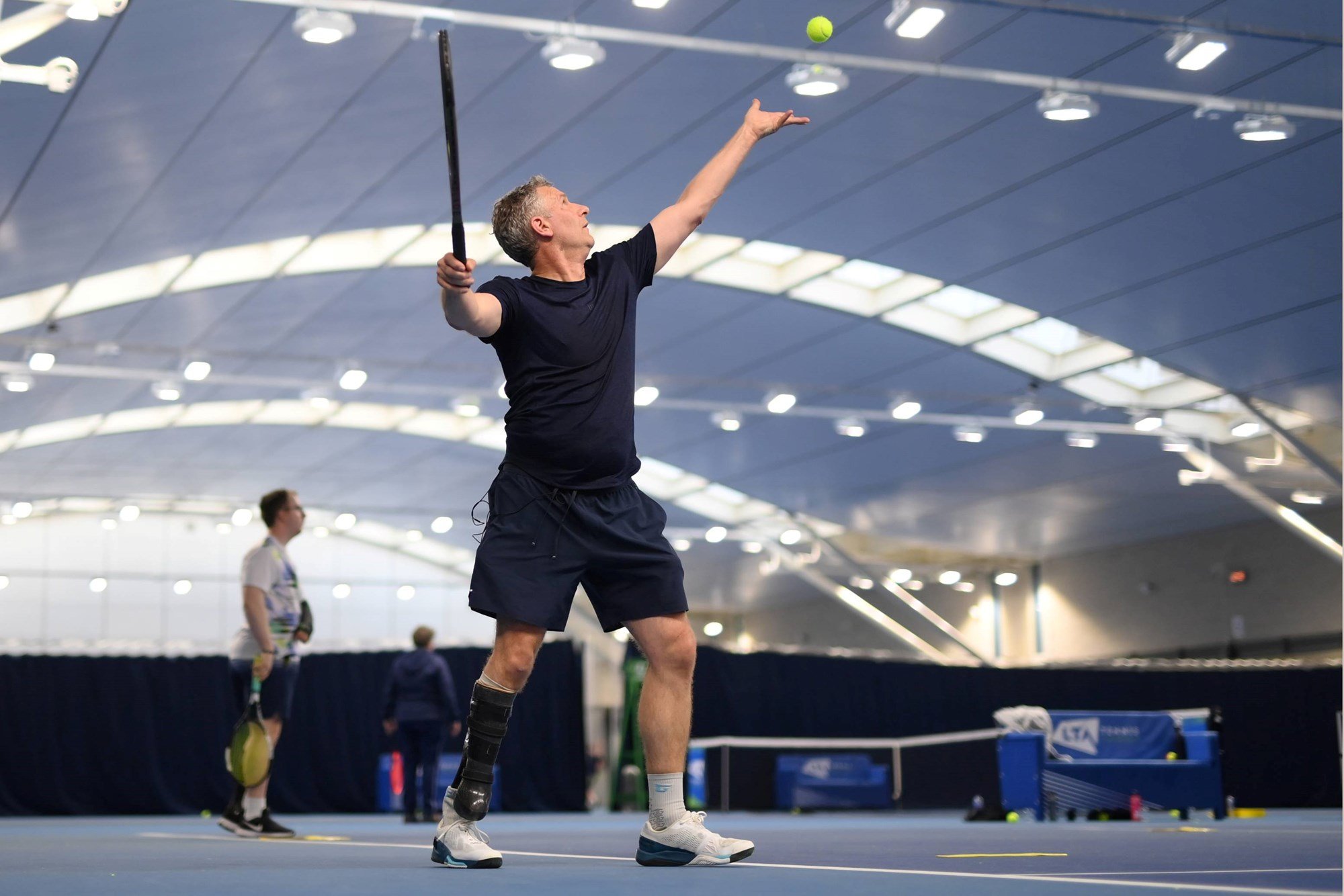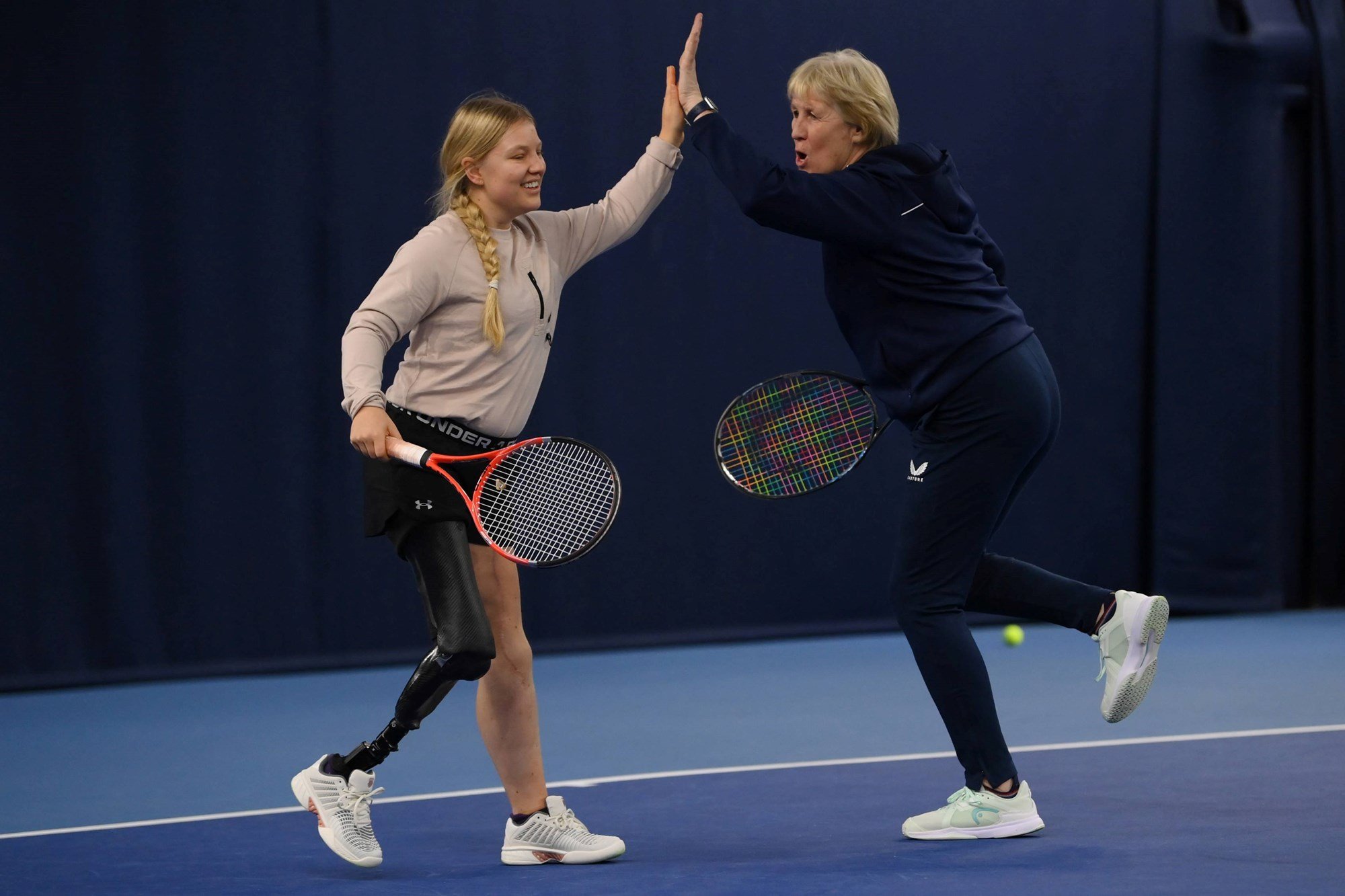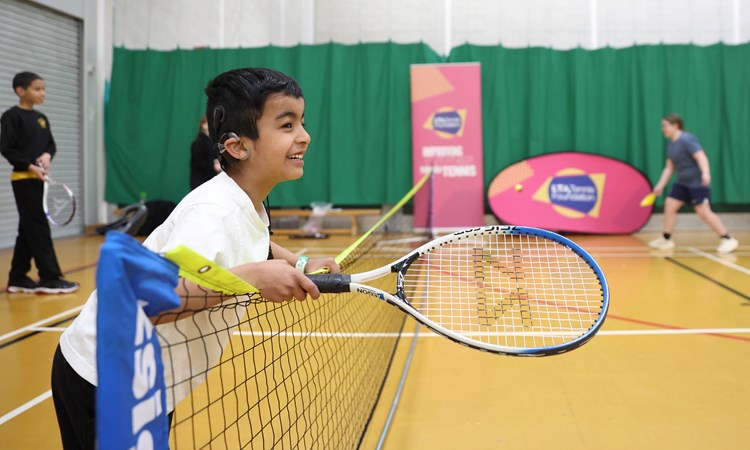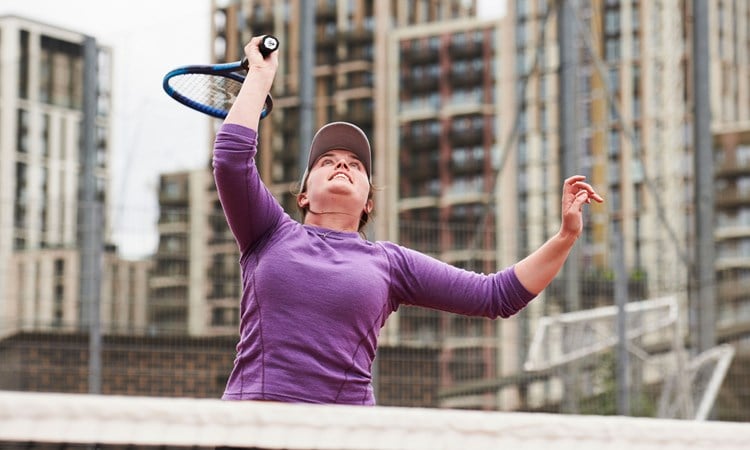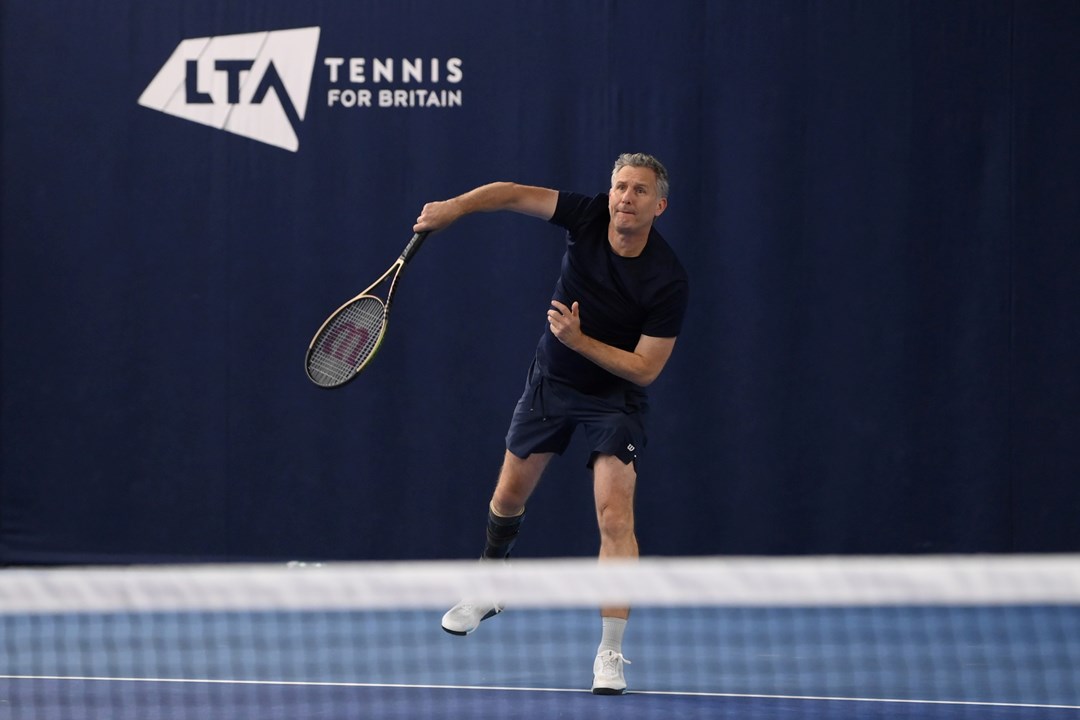
"When you make a sport accessible, you create a community," Adam Hills on how para standing tennis is serving up opportunities for all
• 4 MINUTE READ
Adam Hills is widely renowned for his highly successful career as a comedian and television presenter but is now making a new name for himself as one of the faces of advocacy for para standing tennis – a rising format of accessible tennis.
It’s safe to say, Adam has always been around tennis. He first picked up a racket at the age of five and began playing competitively when he was 12-years-old. From there, he went on to become a professional tennis coach but soon left that job behind to pursue his dream of becoming a stand-up comedian.
While his tennis coaching career might be distant memory, his love for the sport has never faded, with Adam now immersing himself in the world of para standing tennis.
His attempt to ramp up the noise around the inclusive sport has led to the release of a new Sky Original documentary, ‘Adam Hills: Foot Fault’, which follows Adam’s journey through some of the most recognisable tennis locations in the world and sees him uncover some of the barriers faced by aspiring disability tennis players.
You might be thinking, what is para standing tennis? It’s a format of tennis for people with physical impairments - such as limb loss, limb deficiencies, cerebral palsy, acquired brain injuries and people who are short statured - who want to play tennis without the use of a wheelchair.
We sat down with Adam to discuss his entryway into para standing tennis, his hopes of escalating the sport onto the biggest stages in world tennis and why it’s important to give new formats of the game more exposure to help open tennis up.
What I love about para standing tennis is, it’s tennis how I’ve always played it but now, I get to play against people with a similar disability so it’s a level playing field for the first time in my life
“I’ve been playing tennis since I was about five years old, but I only ever played against able-bodied people,” Adam said during a recent visit to the National Tennis Centre in Roehampton. “It wasn’t until about a year and a half ago, after years of searching for disability tennis, that I finally found a form of tennis that didn’t mean I had to get in a wheelchair to play, and I’ve now been playing para standing tennis for about 18 months.
“For me, what I love about para standing tennis is, it’s tennis! It’s tennis how I’ve always played it but now, I get to play it against people with a similar disability - it’s a level playing field for the first time in my life.”
While the popularity of para standing tennis has grown remarkably since the first recorded event back in 2005, there’s still a long way to go in shining a spotlight on the sport and implementing competitive representation in elite-level tournaments, such as Grand Slams and the Paralympics.
That said, the exposure of para standing tennis is heading in a positive direction. In 2023, the US Open hosted its first para standing event which saw a doubles exhibition take place in Arthur Ashe Stadium, and this year, many of those players returned to Flushing Meadows to take part in a two-day long invitational tournament.
While exhibitions and invitational tournaments are a brilliant way of showcasing the sport to a wider audience, Adam emphasises that the introduction of a para standing draw in every Grand Slam tournament would be incredibly beneficial in attracting a new crop of players.
“It’s really taken off - two years ago, para standing tennis was such a tiny thing and now the LTA and Tennis Australia have adopted it, there’s an exhibition at the US Open, it’s in Play Your Way To Wimbledon – it’s just exploded because there are so many people around the world with disabilities who’ve been playing tennis anyway against able-bodied people, and now they’re coming out of the wood work saying ‘there’s a sport for me’.
“Having a (para standing) tournament at the Grand Slams does two things. It exposes the sport, so it lets everyone know about it but also gives them something to aim at. You want everyone to have a pathway into tennis, but you also want them to have something to aim for at the end of it - the Grand Slams are the goal.”
This summer welcomed the introduction of the first ITF supported para standing tennis tournaments. The European Championships were staged in Barcelona while Turin played host to the World Championships, with para standing players from across the world coming over to be a part of two special milestones in the sport’s history.
“Barcelona and Turin were the first ever ITF supported para standing tennis tournaments and they were amazing. There were about 30 something people at the European Championships, there were 70 at the World Championships from all over the world, and all disabilities and we just agreed we needed to tell everyone about it. The qualities are there, the number of countries playing it are amazing, we just need more people to know about the sport.
“When I think about the future of para standing tennis, I think about a couple of kids we met in Turin and Barcelona – arm amputees or arm deficiencies who just turned up and suddenly had something to aim at and people they wanted to be. They were looking at some of the para standing players and saying, ‘Rafa isn’t my hero anymore, you’re my hero’ - so for me, the future is seeing those kids playing at a Grand Slam tournament when they’re 18 or 20.”
For organisations, including our own, it’s pivotal that we continue to open up sport to make it more accessible for individuals with impairments and disabilities.
Our Open Court programme is helping more people than ever to discover different formats of tennis that caters to their disability and allows them an equal choice to play tennis in their own way.
“When you make sport accessible to people, especially with disabilities, it’s not just about the sport. Yes, they’re being more physically active, getting off the couch and getting out of the house and getting involved in something they love, but they’re suddenly surrounded by a community.
“There might be some people with disabilities that you say do you want to get together and chat with other people with disabilities at a social event, but if you get them out playing tennis, they’re like this is awesome, and I’m surrounded by people with disabilities.
“When you make a sport accessible, you create a community and you create a tribe, and people come along who are physically active, they’re having fun, they’re healthier but they’re also socially benefitting from it.”
Find out more about para standing tennis
Whether you want to play, support or just find out more, you can learn about para standing tennis and how to get involved below:

